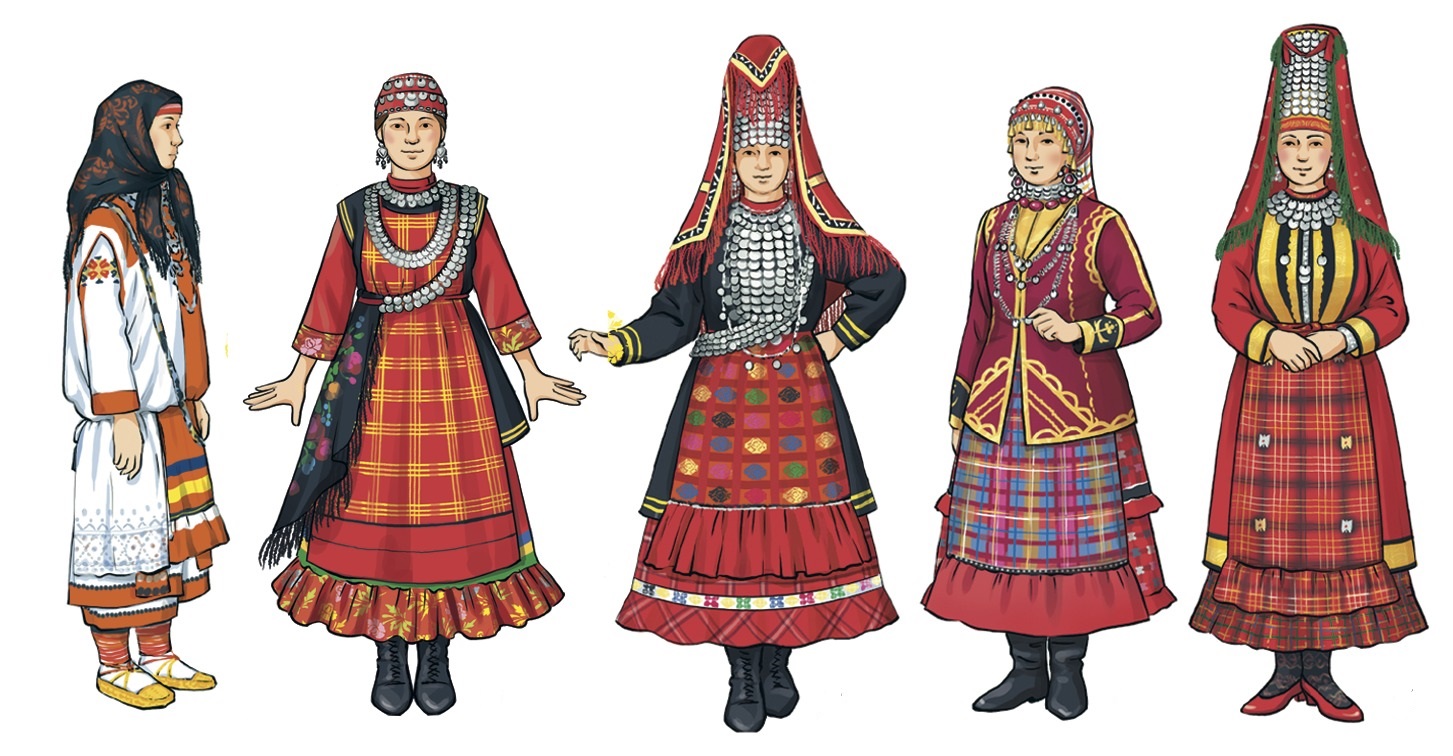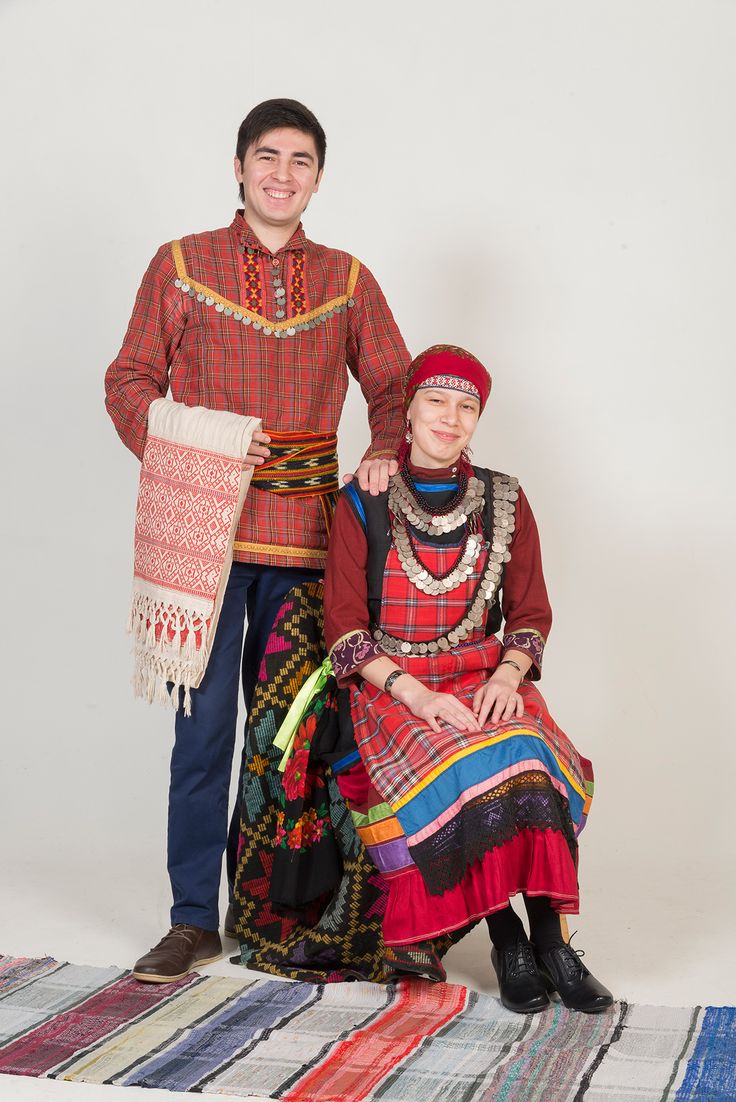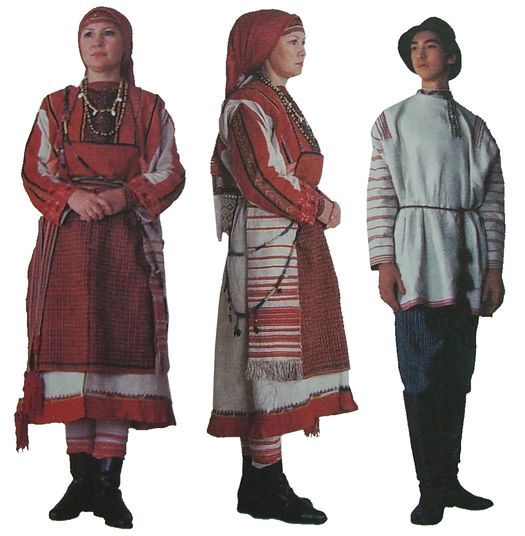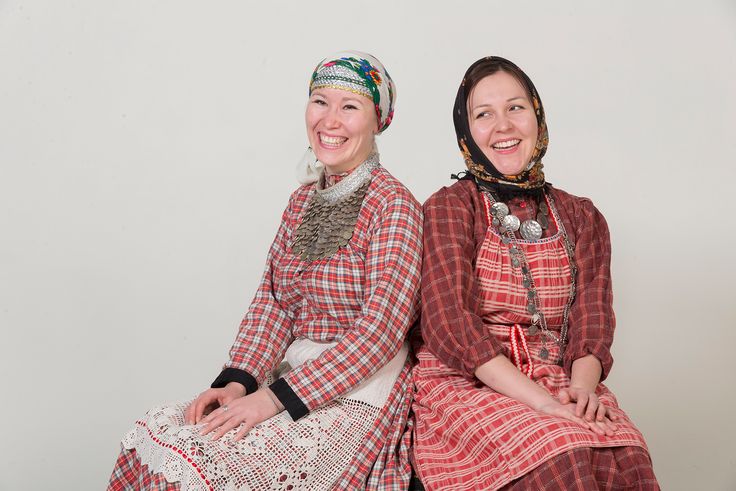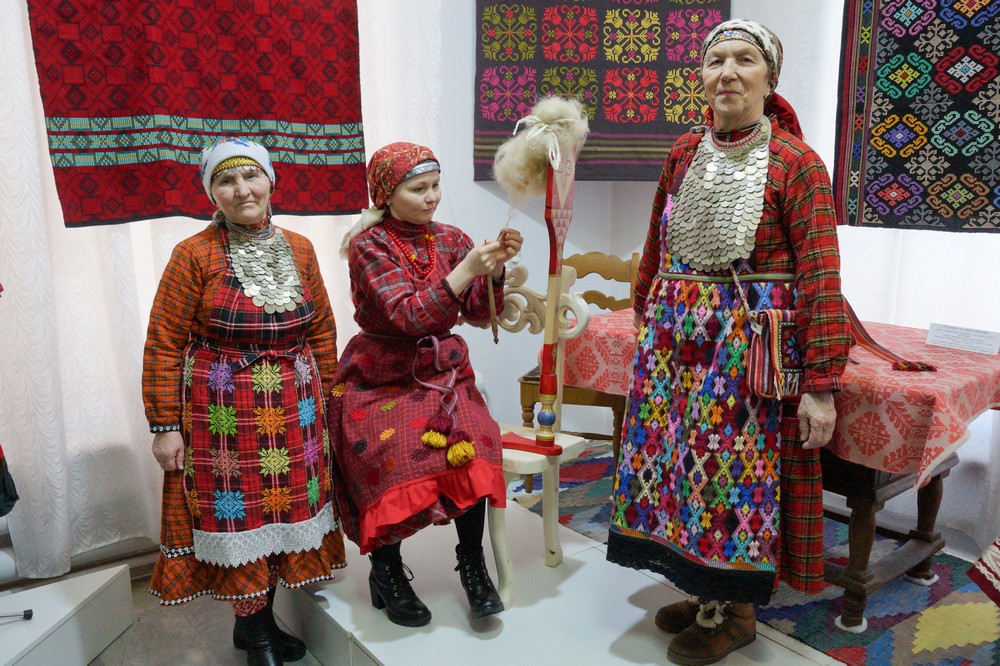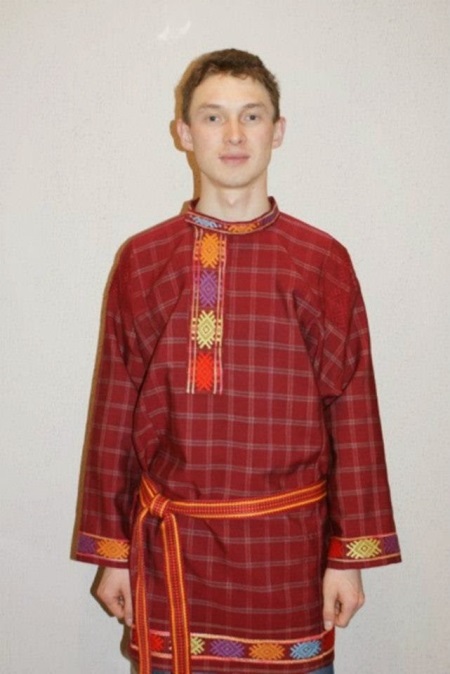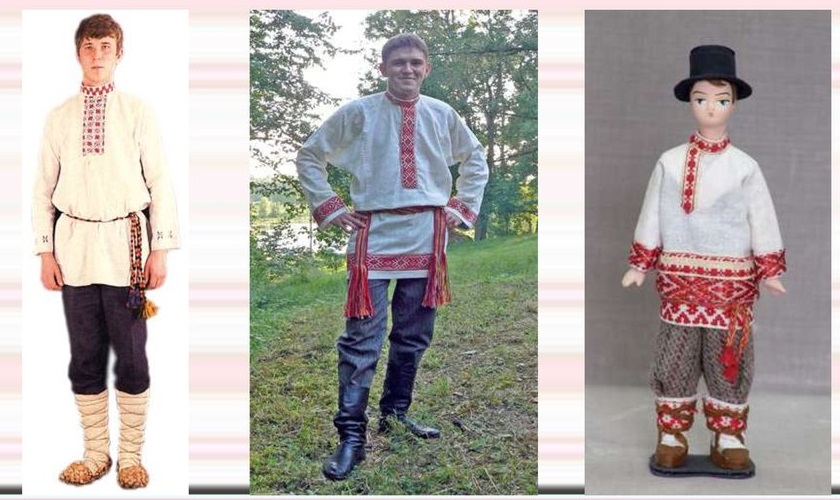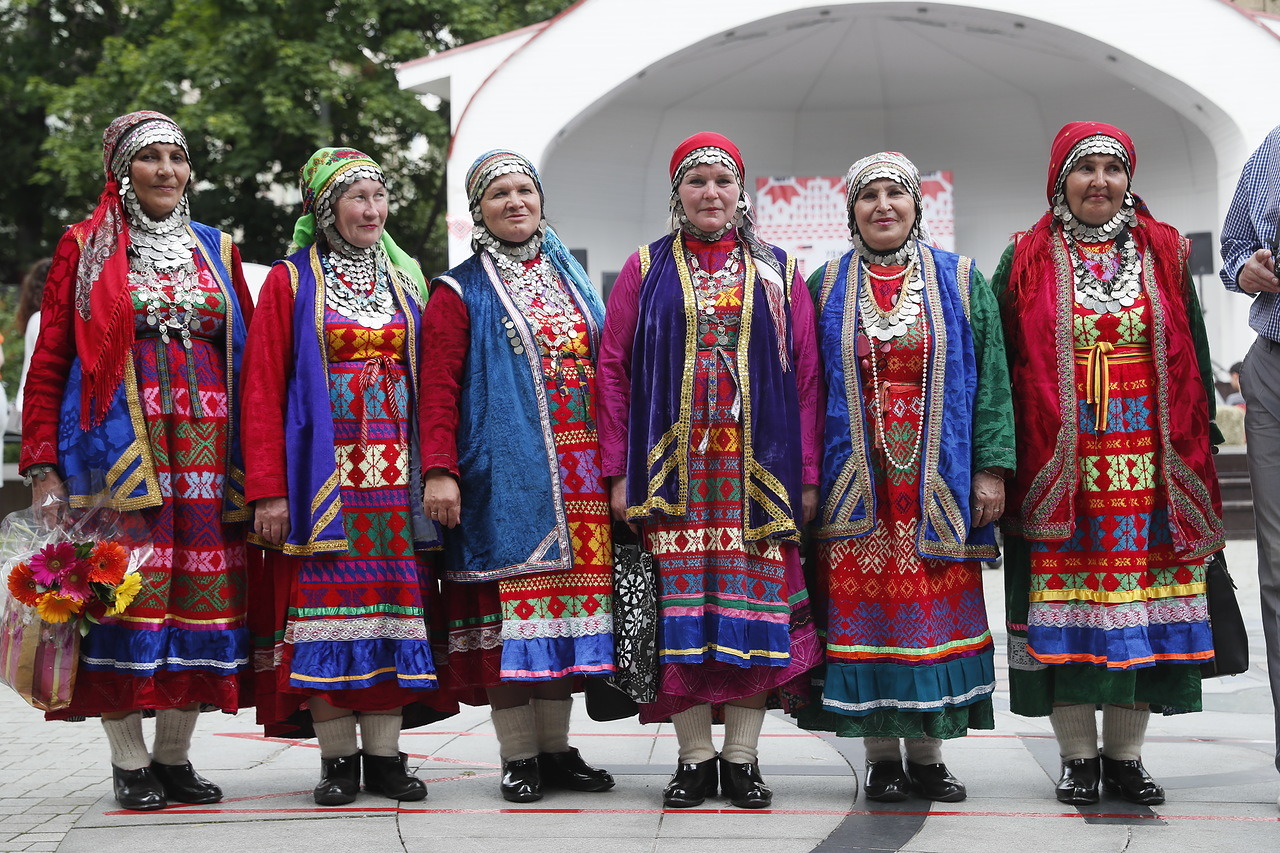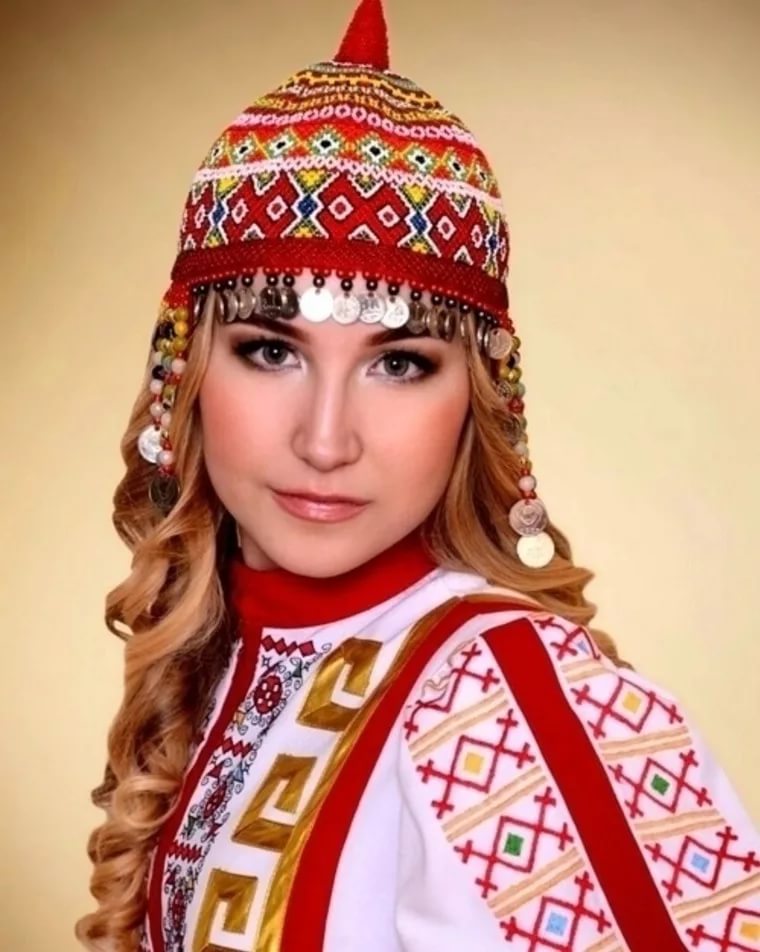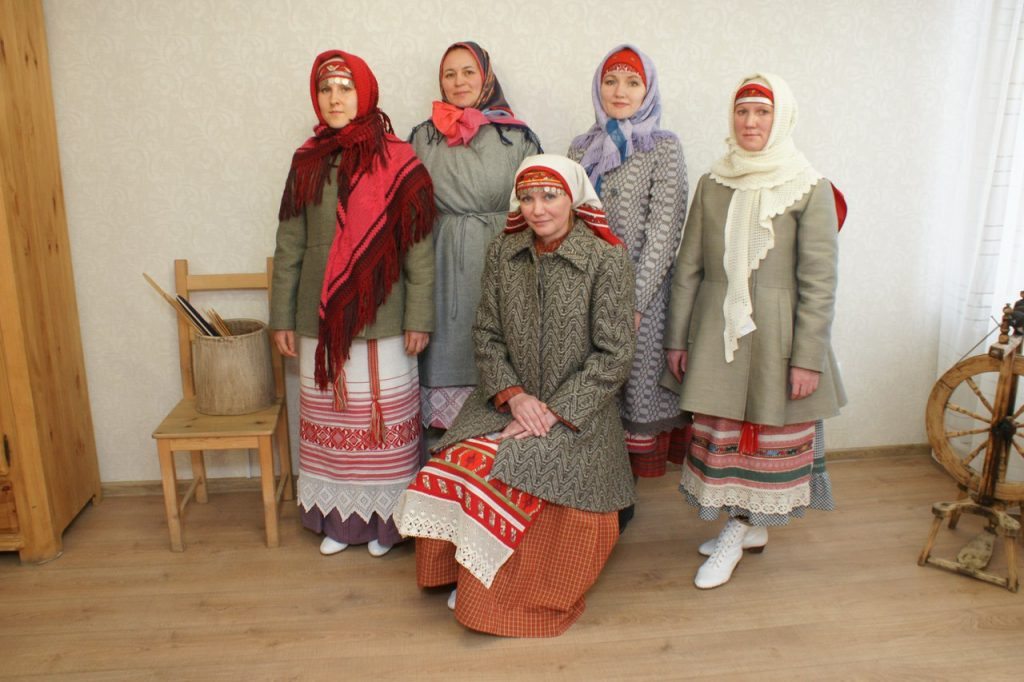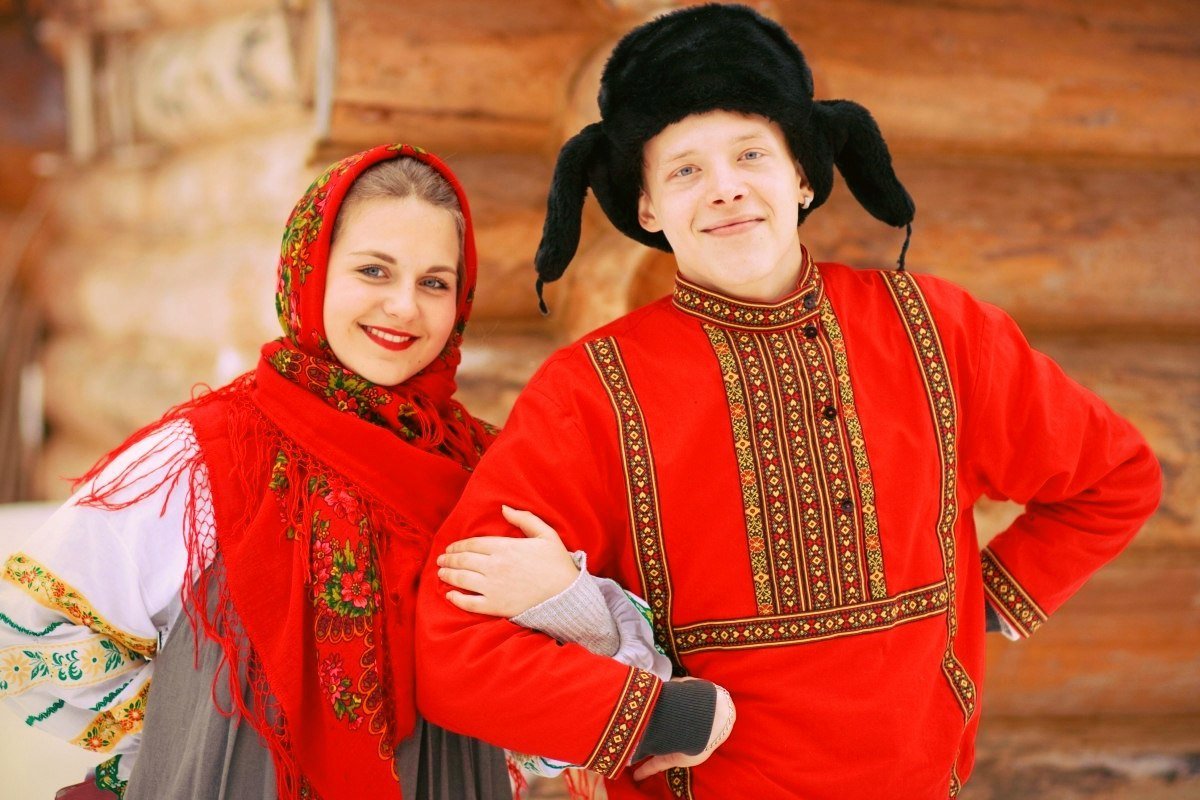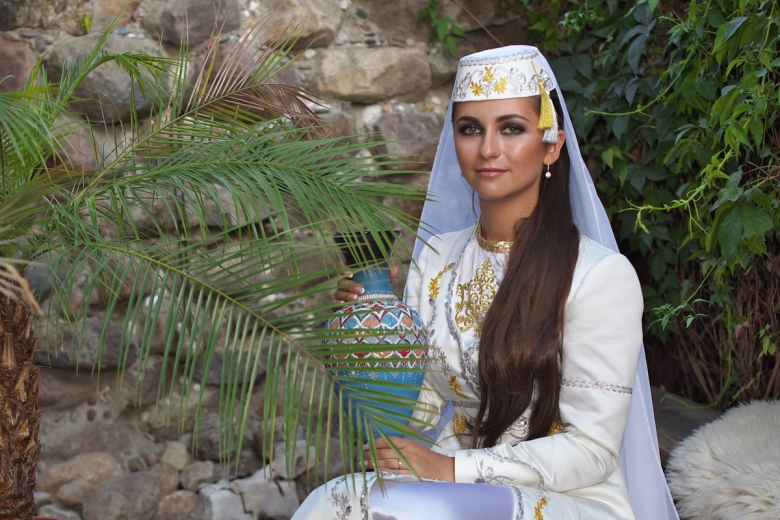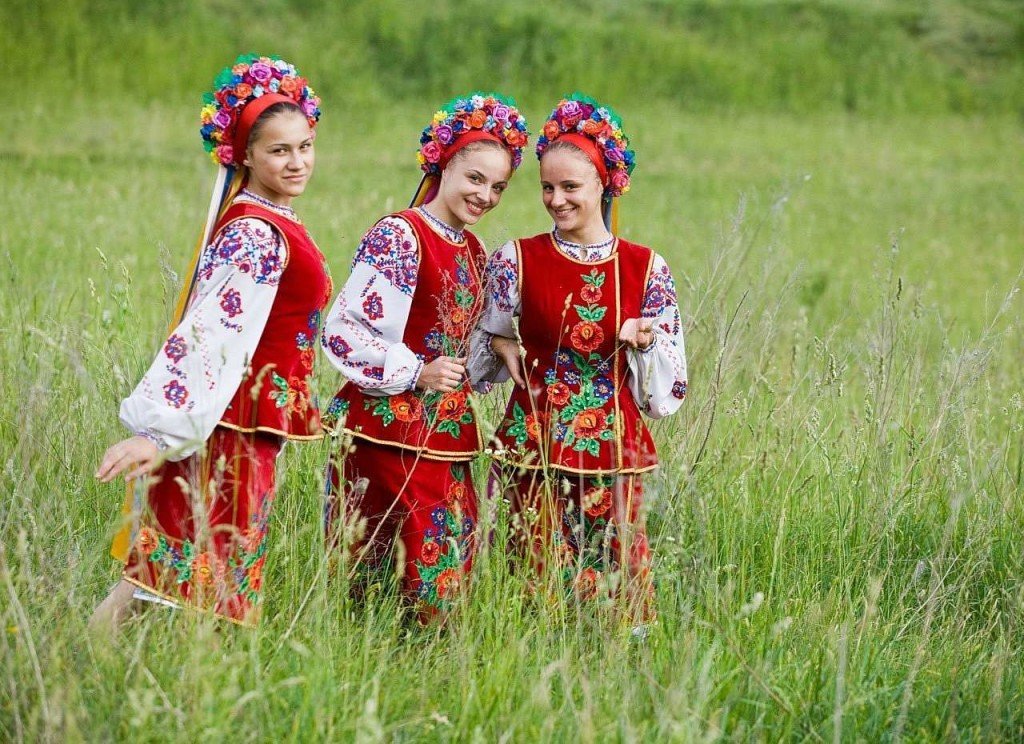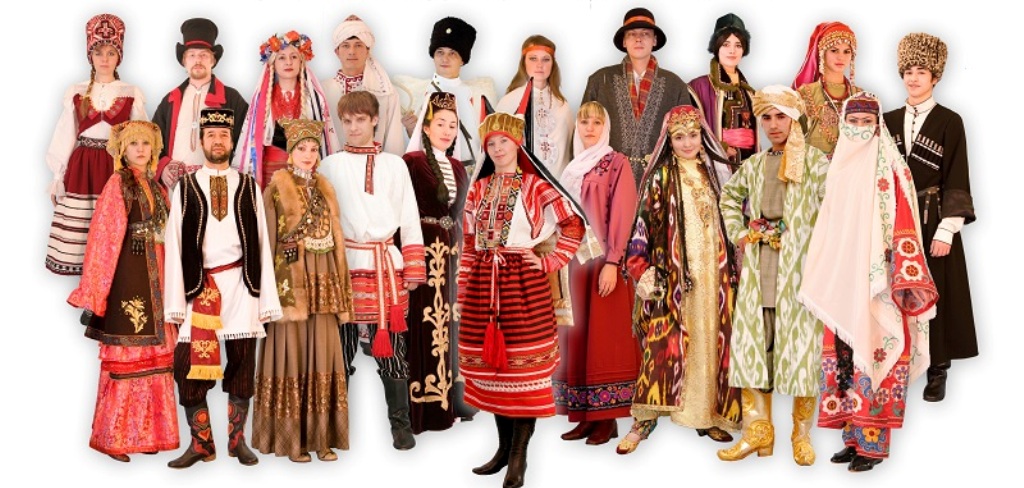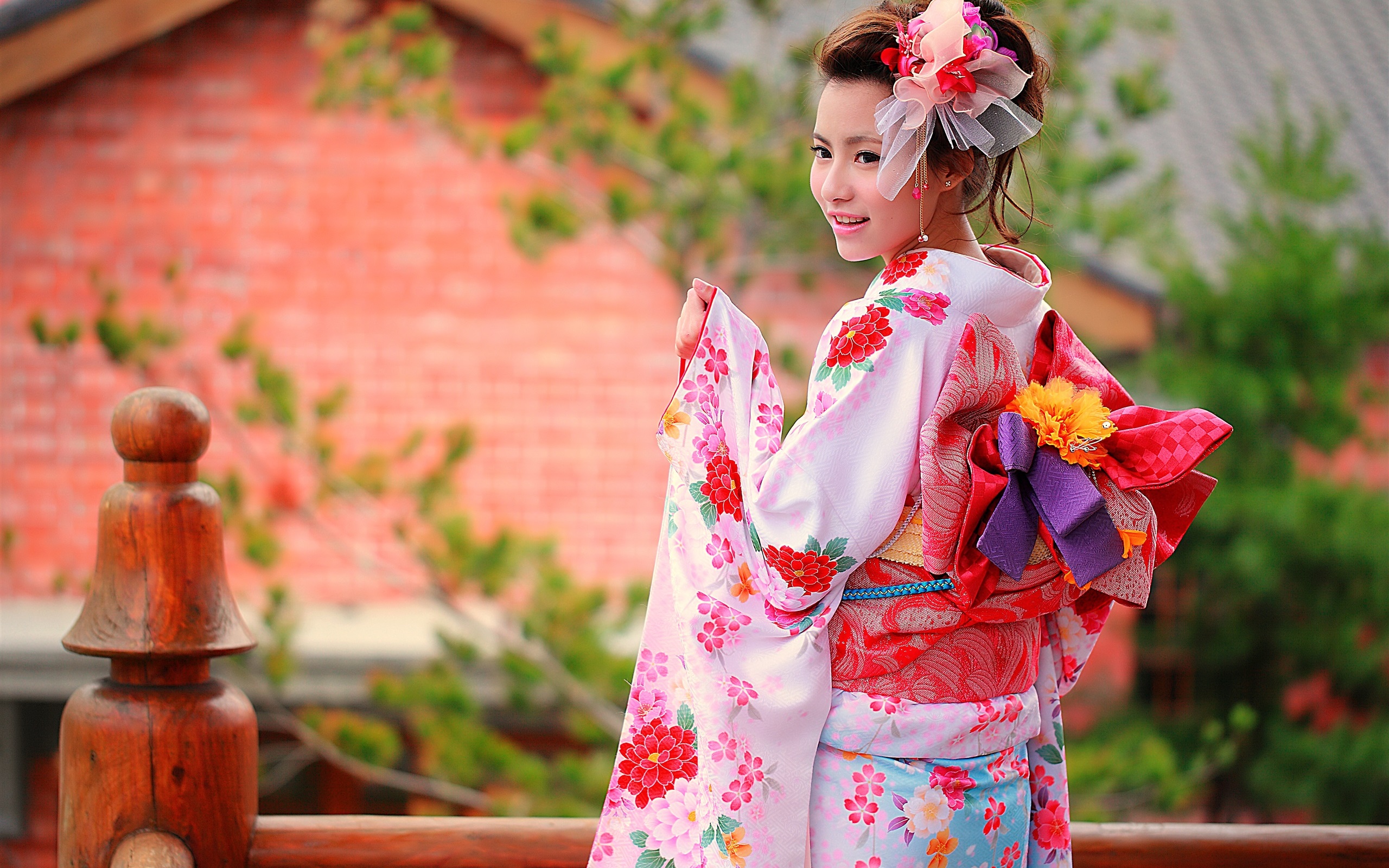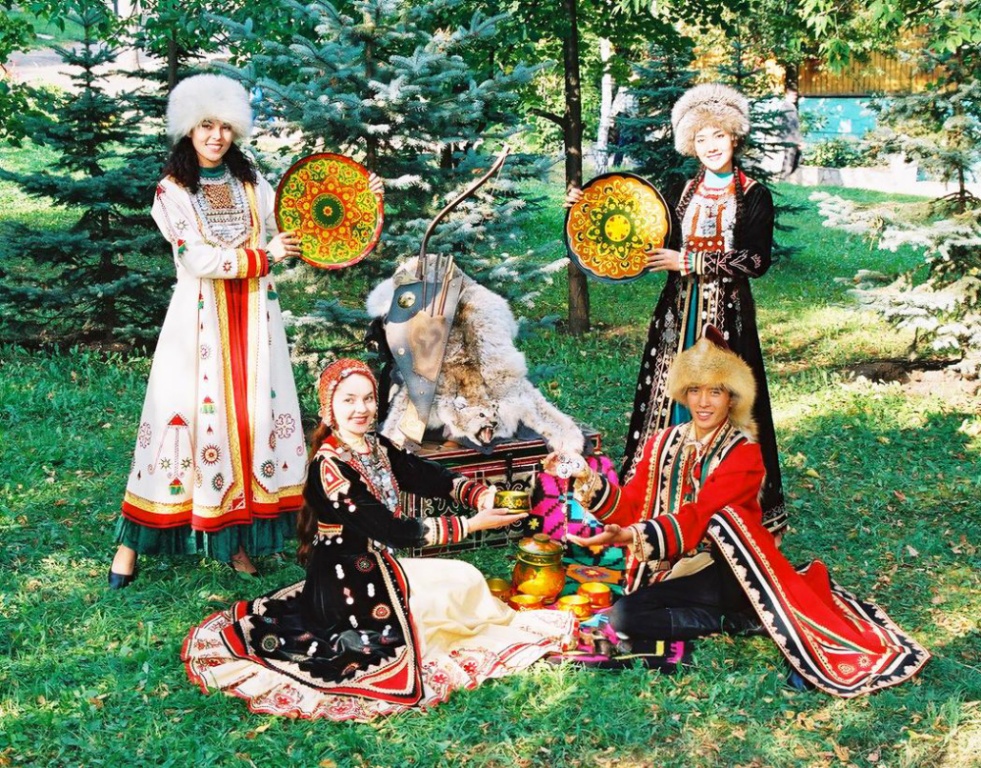Any clothing, in addition to its direct purpose - protecting a person from weather effects, carries an additional functional load. Protective symbols applied to the fabric made the national costume of the Udmurts a kind of amulet against adversity and evil spells. Thanks to individual elements, it is possible to determine the gender, age, status, religion of a person dressed in national clothing.
Traditional everyday clothes and shoes
The costumes of the peoples inhabiting the northern and southern territories of Udmurtia are different. Since ancient times, clothing has been made from simple, high-quality materials: sheepskin, canvas or cloth. Women were taught to weave, sew and embroider from a young age. Before marriage, a young craftswoman would fill her chest with her own homemade outfits, of which there were about 40 pieces. They were intended for her future husband and new relatives. All representatives of the people had several sets of the Udmurt national costume:
- everyday wear;
- festive;
- vestments for rituals (funeral, wedding).
Udmurt footwear includes boots (kata), bast shoes (kut), felt boots (gyn sapeg), and leather boots (sapeg). Women's, men's and children's clothing was made in a special way. Individual elements of the costumes varied, were endowed with their own symbols, which carried a certain function.
Women's
The Udmurt women's folk costume consists of a shirt-tunic (derem), a caftan-robe (shortderem), an apron (ayshet), and a birch bark headdress (ayshon). The Northern Udmurt woman wore a white linen tunic with a removable, intricately embroidered bib (kabachi). On top, she wore a bleached caftan or robe with a belt and apron, but without a chest. The clothing of the northern women was in many ways similar to the clothing of the peoples of the Perm region.
The southern Udmurt woman wore a fitted camisole or sleeveless jacket and a bib apron over her shirt, and trousers underneath. The fabrics used were colorful, borrowed from their Tatar neighbors. Married ladies wore kabachas. Later, bibs began to be made from pieces of embroidered fabric, which were decorated with coins and buttons. In winter, the Udmurt woman wore a warmer suit, complementing it with outerwear:
- sheepskin coat;
- a cut-off waist tunic with false set-in sleeves. It was thrown over the shoulders or put on, and the sleeves were tucked in at the back, with the arms threaded through the slits.
The first time a young wife drove a cow out of her husband's house, she had to wear a caftan with false sleeves. The Udmurts believed that the longer the sleeves, the wealthier the young woman.
The sleeves of women's shirts were embroidered with bright embroidery, which was used as a talisman to protect against the black eye. When the embroiderer finished working, she put her chuk of several threads on the clothing as a master's mark. Other craftswomen were forbidden to copy such vestments.
Men's
The set for the stronger sex of the Udmurt people resembles a Russian costume. Such similarity in attire is natural for neighbors. The male ensemble includes:
- a light striped knee-length shirt with a belt at the waist or with a patterned belt;
- loose-fitting bleached (or blue) canvas trousers;
- shirt collar - decorated with embroidery;
- woven belt - was considered a talisman and had a ritual function;
- In the cold season, they wore a fitted, elongated caftan over the shirt, a full-length coat made of cloth or sheepskin with a huge collar.
A male craftsman would gird himself with a thick rawhide belt with a copper buckle and iron brackets for tools.
Udmurt men's clothing for every day was made from rough, simple fabrics. For sewing shirts of the northern Udmurts' costumes, flax was more often used. Southerners preferred hemp.
Children's
Udmurt children almost always wore out their elders' national costumes. A mother's worn shirt became the first clothing of a little girl, and a father's - of a boy. Rough, repeatedly washed fabric became soft and ideal for delicate children's skin.
Festive attire
The festive Udmurt male costume is a white shirt with embroidered red threads running in stripes along the sleeve, collar, and hem of the garment. Trousers were sewn from black or blue fabric. The belt was made wide in red or motley. Clothes for prayers are an undershirt and a white linen caftan, straight in the front and fitted in the back.
The Udmurt girl's wedding costume was mostly white. The festive caftan was made of plush and decorated with braid. The wedding syulik (white embroidered canvas) was embroidered with black thread and decorated with tassels on the sides.
National headdresses
Multi-layering has always been a feature of national costumes. This is also typical for the Udmurts. Southern girls wore complex headdresses:
- high forehead hats (aishona);
- headbands decorated with beads and ribbons;
- scarves, embroidered and trimmed with fringe;
- When a married woman became a mother, she would wear an embroidered towel, securing it on top with a scarf.
The costume of an Udmurt girl from the north included a canvas cap (takya), which was decorated with coins and red calico. Teenage girls wore a round takya. As they grew older, they changed it for an oblong one. Even young girls wore headbands with sequins and ribbons, as well as scarves made of bleached fabrics. Married women complemented the turban with towels embroidered with red threads. Older Udmurt women wore a pelkyshet (a cap with long ends) instead of a birch bark aishon (kokoshnik), which they covered with a scarf.
The Udmurt costume for men was complemented by a cloth cap in the form of a cylinder. In winter they wore warm sheepskin hats. These headdresses were sewn like a malakhai.
Costume decor
The national Udmurt costume was generously decorated with embroidery, coins, ribbons and various decorations. The removable breastplate and forehead band were especially carefully decorated. Russian coins and silver were used for decoration. Plaques, buttons, pendants and tokens were used.
Rich families passed on silver jewelry as an inheritance. Less wealthy Udmurts used imitation tin and pewter coins in their decoration. They wore metal bracelets with ornaments, as well as a huge number of earrings, rings, and decorative chains.
Unlike the Mordvins and Chuvash, the Udmurts rarely used glass and beads to decorate their costumes. Married ladies liked to decorate their braids with nakosniki, made from a narrow strip of canvas, hung with tokens and coins. The nakosniki was attached to the takya from behind with a metal plate.
The ears were often decorated with pendants (pelugs) made from individual threads of silver coins. The neck was decorated with a string of linen strips. It was trimmed with coins, red calico fabric, small beads, and shells.
A popular decoration among the Udmurts is yyrpin. These are white shells that were considered a talisman. The family heirloom was passed down through generations.
Fabrics and colors
The colors of the Udmurt national costume are white, black, red, ochre, and indigo. The first three shades prevailed in the north. Polychrome colors were preferred in the south. Simple fabrics for everyday wear are canvas, broadcloth, and sheepskin. In the 19th century, silk and satin fabrics were used for evening wear.
The state flag of the Udmurt Republic is made in black, white and red colors.
The national costume of the Udmurt is a good-quality, bright, multifaceted garment, but with constant folk elements. The outfits differ not only in the type of use (festive, everyday or ritual), but also depending on the territorial affiliation of the population, be it reserved northerners with Russian influence or bright southerners, who borrowed a lot for the national costume from the Tatars and Bashkirs.
Video


